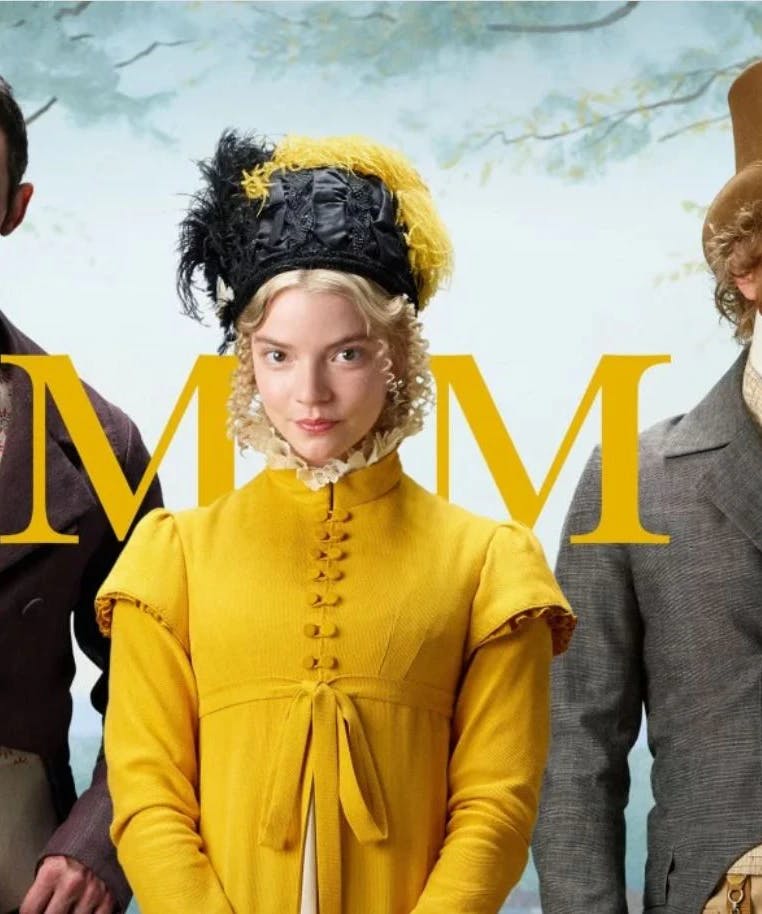The New Emma Movie Is A Cheeky But Delightful Take On Jane Austen's Classic Novel
As a former English teacher and a longtime Jane Austen fan (not quite Austenland level, but I can quote you lines verbatim), I walked into the movie theater with mixed feelings about “the new Emma.” My first impression of the original trailer had been along the lines of “oh hell no,” but my thoughts on the second trailer had been “well…maybe…it might actually be good.” So, I tried to be open-minded as the movie began.

SPOILERS AHEAD!
I’m going to be honest. When it comes to movie adaptations of the books I love, I want – well, more like demand – that the screenwriter and the director display an understanding of the meaning of the book and what the author accomplished through the characters. If they haven’t grasped and subsequently been able to express that, then the movie is a failure in my eyes. And from the moment I saw the first trailer for Emma, I’d had a disquieting feeling that screenwriter Eleanor Catton and director Autumn de Wilde had missed the mark. But when the film began with the opening lines of the book, my fears started to dissipate.

Tone Reigns Supreme
The most significant element of this version of Emma is the tone. Irreverent and cheeky, the tone allows for two very important things to happen in the story. Firstly, it allows the story to be comedic. Goofy sound effects (the carriage window pinging open or the clink of the tea cup being forcibly removed from a shocked Mr. Woodhouse’s hand), real but usually ignored human experiences (a baby farts loudly), and panicked chaos (the sudden eruption of noise and the immediate exit of all the guests from Mr. Weston’s Christmas party when snow is mentioned) all create a continuous succession of funny moments.
Secondly, the irreverent tone removes the need to veer away from intimate or raw human moments like the polite Miss Austen does in her novel. This is why the audience’s introduction to Mr. Knightley is watching him change his clothes (including a view of his bare butt), why the baby farts loudly, and why Emma gets a bloody nose in the middle of Mr. Knightley’s proposal. This version is the substance of Emma without the sugar coating of formal Regency-era manners.
The removal of formal manners between Emma and Mr. Knightley allows Emma to do what she wants – to be open and honest with him.
There are still good manners in the movie. In fact, that’s still one of the main lessons Emma has to learn - to treat others with kindness and good manners.
But the formal manners have been removed, especially from Emma’s relationship with Mr. Knightley. When they argue, they talk over each other in heated tones. This lack of formality is what allows Emma to be completely open and honest with Mr. Knightley during the proposal scene about her interference in Harriet and Robert Martin’s relationship. It’s also what allows Emma to go to Robert Martin herself, giving him not only the gift of the goose and Harriet’s portrait, but also her humble apology and encouragement to pursue Harriet.

While these two departures from the novel would never have happened in Jane Austen’s day (because formal manners, delicacy, and social class differences would forbid it), they also manage to maintain the heart of Emma. At the end of the book, Emma tells Jane Fairfax: “Oh if you knew how much I love everything that is decided and open!” Emma also longs for the day when she and Mr. Knightley can always be transparent with each other: “The pain of being obliged to practice concealment towards him [about Harriet being in love with him], was very little inferior to the pain of having made Harriet unhappy.”
The removal of formal manners between Emma and Mr. Knightley allows Emma to do what she wants – to be open and honest with him. It’s actually pretty brilliant to pare away the formal manners, leaving Emma with the ability to express good, kind manners and to answer the claims of justice. She has the freedom to right her wrongs and to complete the character growth arc she was set upon.
A True Likeness
Overall, the characterization was well done. Mr. Elton is appropriately cringey with his over-the-top arm gestures and flowery gallantry. Harriet Smith is a wonderful blend of sweet and awkward (OMG, the way she runs!). Emma and Mr. Knightley are accurately and admirably brought to life. But for me, Mr. Woodhouse (played by Bill Nighy) takes the cake. Some creative revisioning was done here, and done for the better! While he retains his hypochondriac preoccupations, this Mr. Woodhouse is sprightly in body and sharp in mind. The contrast produces a delightfully funny and complex character.

Eye Candy
Last, but certainly not least, this film is visually gorgeous. The costumes are full of textures and colors. The interior settings of the various mansions are filled with grand rooms decorated with colorful tapestries, marble sculptures, and gilt frame paintings. Tables are loaded with cakes and desserts skillfully frosted in pastel flowers and fancy designs. Outside are the vivid green fields of the English countryside. It’s a period piece done right, fulfilling our modern desire for the beauty and luxuriousness of days gone by.

Closing Thoughts
My verdict is that this film is a success. I think it managed to both be faithful to and improve on Jane Austen without blaspheming her vision or her characters and present her classic story in a style that will be attractive to modern audiences.